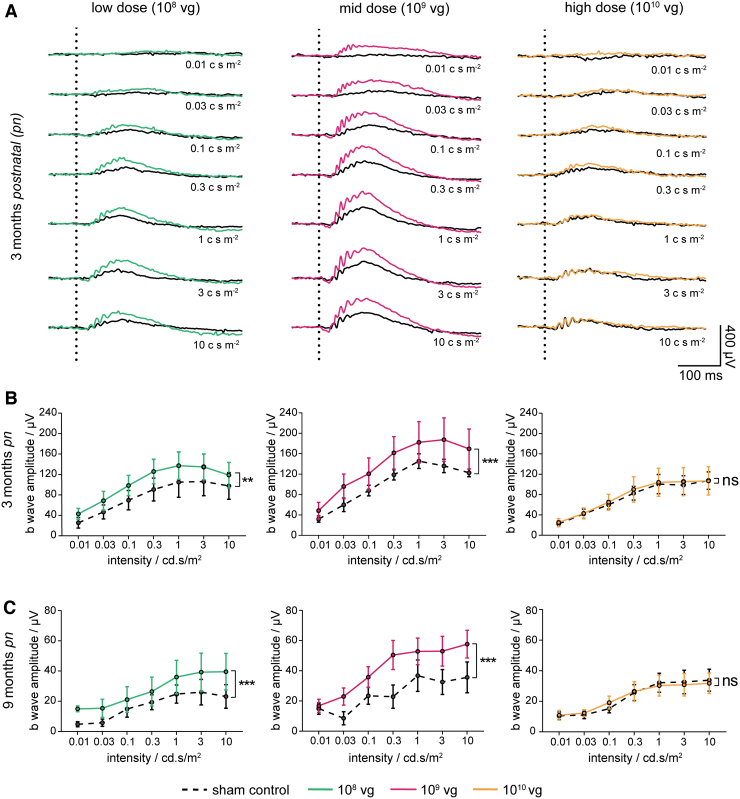Figure 3.
rAAV5.hCNGB1 leads to a dose-dependent gain of rod-driven ERG amplitudes in treated Cngb1−/− mice. (A) Overlays of representative ERG signals of 3-month-old–treated Cngb1−/− mice injected with different doses (low dose 108 vg; mid-dose 109 vg; high dose 1010 vg) of rAAV5.hCNGB1 at 4 weeks. Vertical dotted lines mark the time point of light stimulation. Respective sham-injected contralateral eyes served as controls showing almost no (rod-mediated) response at low light intensities (0.01 and 0.03 cd s m−2). Mid-dose treatment (magenta lines) showed highest gain in photoreceptor function compared with the respective sham-injected control (black lines). In this group the b-wave amplitude (positive deflection) obtained under low light intensities was clearly higher in the treated than in the sham-injected control eye. A treatment effect was also evident at higher luminances. In contrast, only a small increase was seen in ERG signals after treatment at low dose (green lines) and no obvious differences observed after high-dose (orange line) treatment compared with sham-injected control eyes. (B, C) Quantification of b-wave amplitudes of treated and sham injected Cngb1−/− eyes at 3 and 9 months of age shows a dose-dependent beneficial effect on retinal function. Mid-dose and to a lesser extent low-dose treatment resulted in significantly increased b-wave amplitudes, whereas treatment at high dose did not cause any difference on the ERG b-wave. Although overall amplitudes declined over time, a significant gain of ERG function was seen at 9 months of age suggesting a long-term benefit of rAAV5.hCNGB1 treatment. For 3 months pn: low dose n = 7, mid-dose n = 6, high dose n = 6; for 9 months pn: low dose n = 7, mid-dose n = 7, high dose n = 10. Values are given as mean ± SEM (unpaired two-way ANOVA with Sidak's post hoc test; **p ≤ 0.01; ***p ≤ 0.001; ns, not significant). ANOVA, analysis of variance; ERG, electroretinography; pn, postnatal; SEM, standard error of the mean. Color images are available online.

